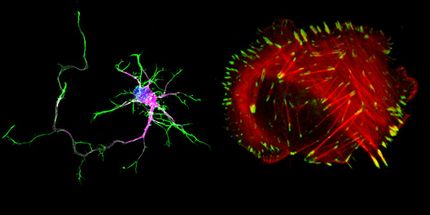Mayo researchers develop new laboratory cell lines to study treatment for ATC
Advertisement
To their deep dismay, researchers at Mayo Clinic discovered several years ago that laboratory samples of anaplastic thyroid cancer (ATC) they were using to help them find new treatments for this lethal disease were probably some other kind of cancer. It quickly became evident that the situation in their lab was common throughout the world. Up to half of the cell lines that were supposed to originate from patients with this rare thyroid cancer were either colon or melanoma cancer. So, with the cooperation of many researchers nationwide, the Mayo researchers set out to create a new set of laboratory ATC cells, derived from tumors donated by patients.
In the Journal of Clinical Endocrinology & Metabolism, the researchers report successful creation of four new ATC cell lines, each with a different set of molecular mutations driving this aggressive cancer. Survival for ATC patients is typically brief, three to four months on average, as illustrated by the speculated ATC diagnosis and death in 2005 of Chief Justice of the United States William Rehnquist.
The researchers are sharing the new ATC cells with researchers internationally who need them, says the study's co-principal author, John Copland, Ph.D. , a cancer biologist at the Mayo Clinic campus at Jacksonville.
"Since cell lines are immortal and can live forever, they are critical to research and a major issue is cell line contamination leading to misidentification and drawing incorrect conclusions for specific cancers," Dr. Copland says. "We provide higher standards for characterizing new cell lines at the genomic and molecular level that can be traced back to the originating tumor tissue."
The study shows detailed molecular fingerprinting that links genetic mutations found in the patients' tumors to the cell lines that are derived from these tumors. If any question arises in the future as to whether the newly created cell lines have become contaminated by other cancers, researchers can use the Mayo Clinic data to confirm the origin of the cells.
This matters, the researchers say, because advances in cancer treatment depend on the testing that is first undertaken in cell lines, and, therefore, the cell lines must be pure. "We want to test different drugs against each cell line in which specific pathways are activated to see the effects," says endocrinologist Robert Smallridge, M.D. , the other co-principal author. "Each of those different combinations of molecular abnormalities is going to generate a different set of potential targets that can be attacked through drug therapy."
Dr. Smallridge believes that within a few years it will be possible to genetically analyze each patient's ATC tumor in real time, and match its molecular profile to potential drugs. "No two tumors may match each other, but by understanding through a systems biology approach the multiple pathways that are active in the cancer, and then using a combination of drugs that inhibit these pathways simultaneously, we will begin to make progress against this cancer," he says.
























































